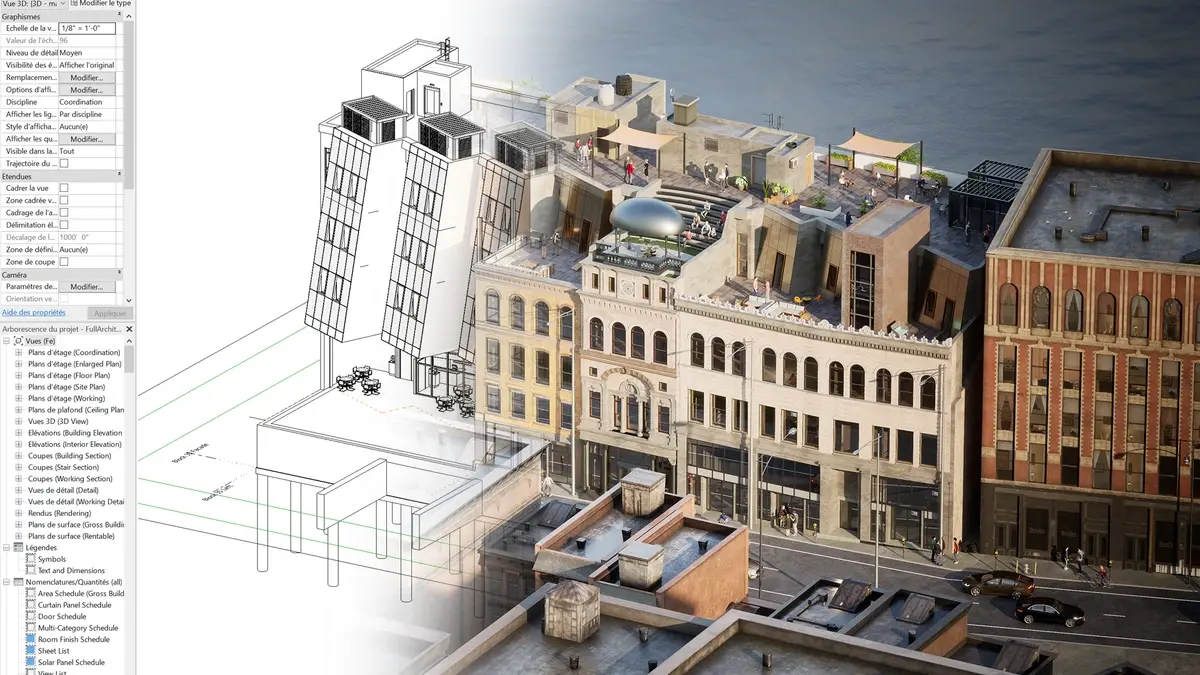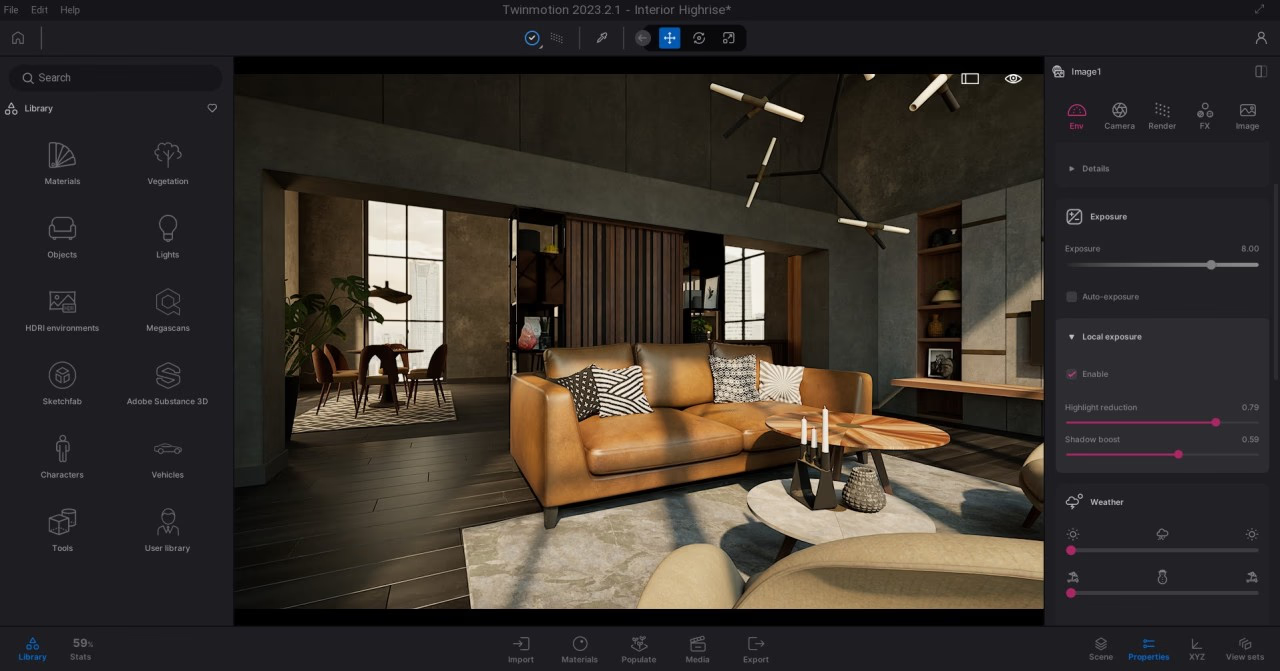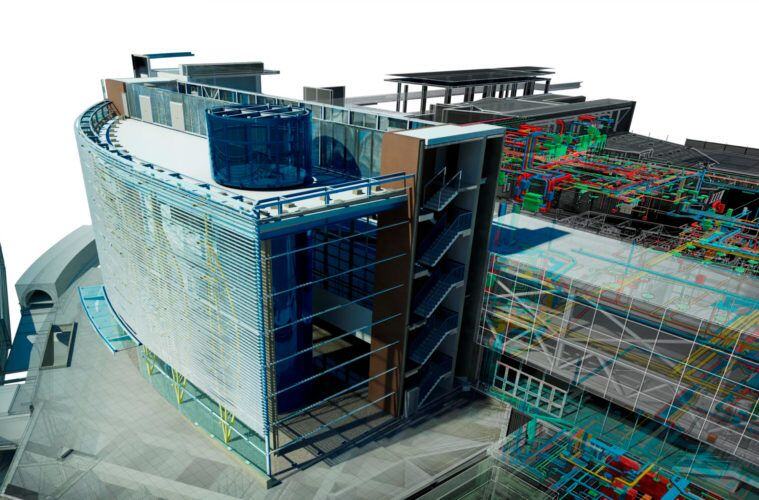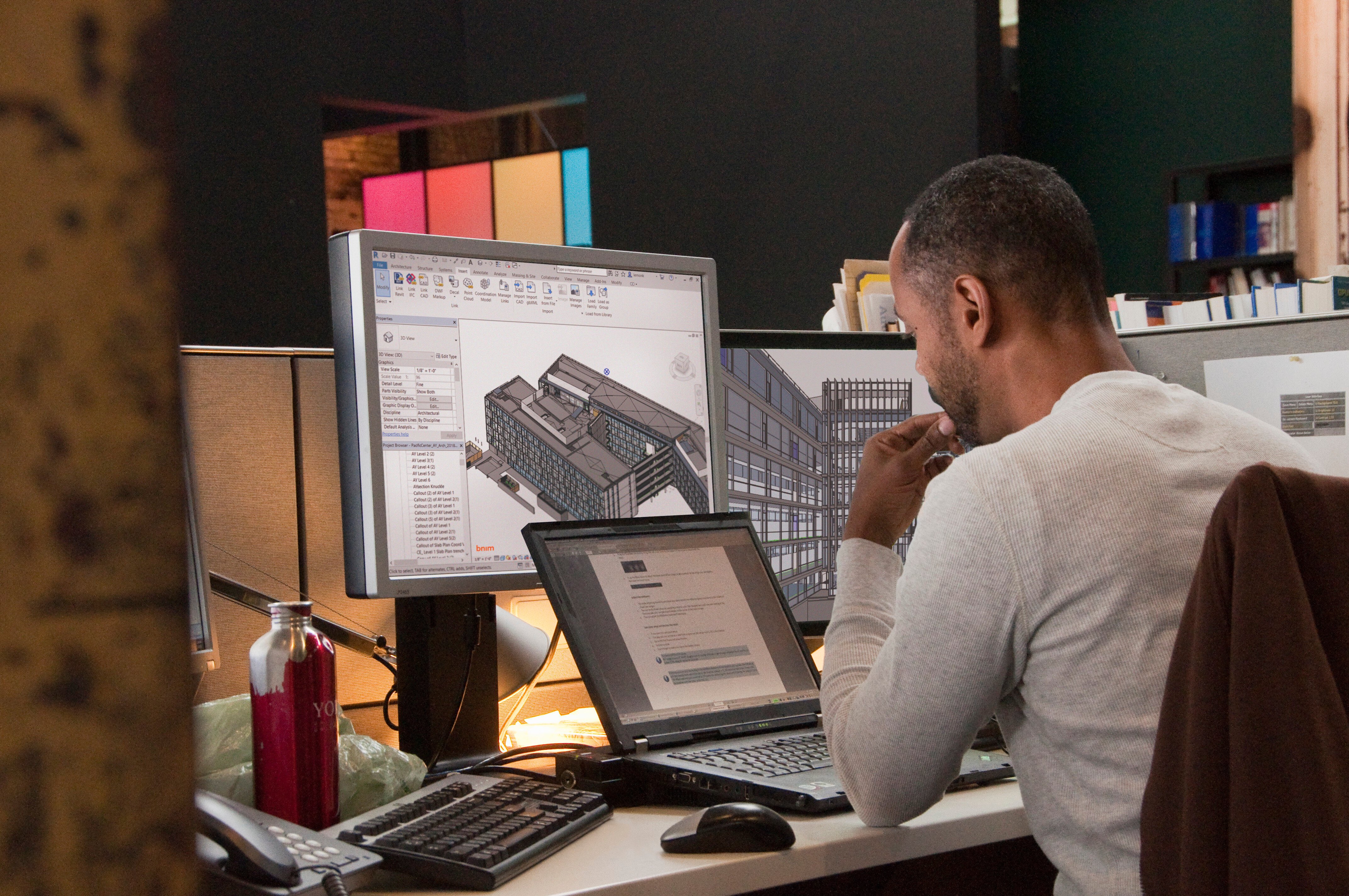
Real-time 3D visualization has become an asset for architects and urban planners. Twinmotion, a powerful visualization software, allows architects to quickly create high-quality renderings and immersive environments, bridging the gap between design concepts and real-world applications. Its rich features leverage the power through an intuitive and accessible user interface designed to make real-time visualization fast, easy, and fun.
Expertise in Twinmotion even for beginners demonstrates their ability to produce realistic visualizations, making it easier to communicate design intent and engage clients. Twinmotion skills are increasingly valued in the industry, offering a competitive edge for those looking to stay ahead in an ever-evolving field.
Read on to understand what Twinmotion is and why learning it can give architects a competitive edge over others in the industry. Also, know about the top 10 Twinmotion rendering courses in the USA to get started.
How Can Learning Twinmotion Make You Stand Out From the Crowd?

Twinmotion provides architects a dynamic platform to experiment with unconventional and complex designs. It offers a wide range of features that allow them to explore their ideas and create realistic architectural visualizations. By using these features, architects can effectively conceptualize their projects.
1. Large Asset Library
The vast asset library simplifies the process of enhancing designs with realistic details. The software integrates many elements into projects, including plants and furniture. This comprehensive collection not only accelerates the design process but also guarantees a refined and visually stunning final result.
2. Compatibility
Twinmotion offers seamless synchronization and model import capabilities with various 3D modeling and BIM training software, including ArchiCAD, Revit, Grasshopper, and SketchUp Pro. Its compatibility across multiple platforms makes it an exceptionally versatile tool easily adaptable to various industries.
3. Extensive File Format Support
You can import files from various sources, supporting animations in .fbx, .glb, and .gltf formats in Twinmotion. Additionally, complete scenes exported from CityEngine and Navisworks are compatible via Datasmith’s native .udatasmith format, along with heightmaps and point clouds in several different formats.
4. Immersive VR Experience
Twinmotion goes beyond on-screen 3D visualization by supporting Virtual Reality (VR) experiences. This feature allows professionals to interact with and explore their projects in a fully immersive virtual environment. It offers a more profound understanding that improves decision-making and takes client presentations to the next level.
5. High-Fidelity Lighting in Real-Time
The introduction of path tracing has dramatically enhanced the popularity of Twinmotion. This advanced feature simulates the behavior of light with incredible detail, offering a highly accurate depiction of how light interacts, reflects, and illuminates objects within the scene. Additionally, Twinmotion offers a wide selection of HDRI maps, enabling users to craft the ideal environment and mood for their renders.
6. Dynamic Environments
Twinmotion goes beyond static visuals by allowing the creation of immersive environments. Users can simulate changing lighting, weather conditions, and the passage of time, offering a deeper sense of realism. This dynamic functionality is essential for understanding how a project performs and interacts with its surroundings across different scenarios.
7. Career Progression
There is a growing demand for professionals skilled in Twinmotion within the industry. Renowned global design firms like Zaha Hadid Architects and BIG Architects rely on Twinmotion to bring their projects to life. As a result, architects with expertise in Twinmotion are more likely to secure positions with leading design and construction companies.
Top Twinmotion Architecture Courses
When choosing a Twinmotion course online, it is imperative to consider factors like duration, faculty expertise, and fee. Here’s a comparative analysis to help you make that choice.
|
Course Name |
Duration |
Fee |
|
BIM and Twinmotion Professional Course for Architects by Novatr |
7 months |
$3500 |
|
Twinmotion 3D Architecture Visualization: Beginner to Intermediate level by Skillshare |
NA |
NA |
|
Twinmotion “Everything that you need to know” Beginners Guide by Udemy |
NA |
NA |
|
Twinmotion for Architecture by VRay School |
NA |
NA |
|
Twinmotion Training: The Advanced Guide to Twinmotion by ArchAdemia |
NA |
NA |
|
Introduction to Twinmotion by Epic Games Developer |
NA |
NA |
|
Twinmotion Beginner to Advanced by David Tomic |
NA |
NA |
|
Twinmotion Fundamentals Training by IMAGINiT Technologies |
NA |
NA |
|
Twinmotion Real-time 3D Architecture Visualization by Class Central |
NA |
NA |
Why Should You Choose Novatr?

Novatr’s online BIM certification course aims to help architects, particularly those in the USA, launch successful BIM careers regardless of their experience level or technical expertise. Through hands-on projects, mentorship from industry experts, and access to advanced techniques and software, this all-inclusive course empowers architects to master Twinmotion with 10+ BIM software and land lucrative career opportunities. Through this course, you can get guidance from seasoned professionals with industry insights and best practices, connect with top firms and recruiters to fast-track your career, and access self-paced lessons.
Curriculum details:
- Introduction to BIM
- Basics of BIM
- Advanced BIM Modeling
- Information Management
- 3D Visualization
- BIM Process and Industry Workflows
- Team Collaboration
- BIM Coordination using Navisworks
- Dynamo, Sustainability tools and Primavera
Significant aspects of the program:
-
Career-focused guidance with personalized feedback from industry recruiters.
-
Curriculum endorsed by over 200 industry professionals and aligned with ISO 19650 standards.
-
Affordable pricing with flexible payment options, including up to 24-month instalments for U.S. learners.
- Opportunity to learn from top industry experts from renowned firms like AECOM, Populous, Henning Larsen, and ZAHA.
-
80+ hours of detailed sessions complemented by 24/7 AI-powered query support.
-
Certification recognized across the industry, enhancing career advancement in BIM.
-
Engaging, gamified learning experience through our AI-powered Learning Management System.
The flexible curriculum includes weekly live sessions, mentor interactions, and a capstone project. Students learn alongside an international community of architects. Upon course completion, students will receive a globally recognized BIM certification, a professional-level portfolio, and access to new job opportunities. With the rising demand for Twinmotion in the USA, architects can leverage this course to work on global projects. Join a worldwide network of 6,000+ learners. Enroll now for the 2025 cohort!
Conclusion
Reputed industry leaders in the USA highly value architects with expertise in Twinmotion. BIM training and related software expertise are the most sought-after skills, projecting the demand for skilled professionals. They assure an accelerated career growth, job security, higher salaries, and improved work-life balance. The ongoing evolution of the architecture industry, along with a growing focus on sustainable and innovative building methods, points to a brighter future for architects. With the right training and skills, architects can secure top roles in the industry and future-proof their careers. Therefore, consider taking up a Twinmotion course online to position yourself as a desirable candidate for MNCs and global architecture firms.
If you want to learn Twinmotion and other rendering software, join the BIM Professional Course for Architects by Novatr to future-proof your career.
Head to our Resources Page to get more insights on the importance of BIM and related topics.
Frequently Asked Questions
1. What is Twinmotion and why should architects learn it?
Ans: Twinmotion is a real-time 3D visualization software that allows architects, designers, and urban planners to quickly create high-quality images, animations, and immersive environments. It enables users to create photorealistic rendering and interactive simulations. Architects should learn Twinmotion because it streamlines the design process, allowing faster decision-making and more effective client presentations. Its intuitive interface and real-time rendering make it a powerful tool for visualizing concepts and exploring design alternatives before actual construction begins.
2. How does Twinmotion help in architectural visualization?
Ans: Twinmotion enhances architectural visualization by providing an easy-to-use platform for creating immersive 3D environments. It allows architects to import models from other software (such as Revit, SketchUp, or Rhino) and visualize them in real-time. With Twinmotion, architects can simulate lighting, weather conditions, and time of day, providing an accurate representation of how the design will look and feel in different environments. The software’s ability to produce quick and realistic renders allows architects to explore design ideas more efficiently and communicate concepts more clearly to clients and stakeholders.
3. What are the key features of Twinmotion that architects should know?
Ans: Following are the key features of Twinmotion
- Real-time rendering: Instant visualization of changes made to the design.
- HDRI Maps and Lighting Simulations: Ability to simulate real-world lighting and environmental effects.
- Path Tracing: Advanced rendering technique that enhances the realism of light behavior in the model.
- Interactive Walkthroughs: Creation of animated walkthroughs and fly-throughs that allow for a fully immersive experience.
- Large Asset Library: Access to a vast library of materials, plants, furniture, and other elements to enrich the design.
- Weather and Time Simulation: Allows users to adjust weather conditions and time of day to see how the project will interact with its environment over time.
- VR Support: Integration with VR headsets for an immersive, 360-degree view of the project.
4. Can Twinmotion be used for landscape and urban design projects?
Ans: Yes, Twinmotion is highly suitable for landscape and urban design projects. Its real-time rendering and large library of assets make it ideal for visualizing buildings and outdoor spaces, parks, streetscapes, and entire urban environments. Designers can simulate how landscaping elements like trees, water features, and pathways will interact with the built environment. Additionally, urban planners can use Twinmotion to visualize urban planning scenarios, test the impact of different design choices, and assess how a project integrates with its surroundings.
5. Does Twinmotion support photorealistic rendering for architectural projects?
Ans: Yes, Twinmotion supports photorealistic rendering through its path-tracing feature, which simulates light behavior in a highly accurate manner. This allows for realistic reflections, refractions, and shadows, making the renders look lifelike. Architects can use Twinmotion to create high-quality still images and animations that effectively convey the look and feel of a design, making it an essential tool for presenting projects to clients and stakeholders.
6. What is the best Twinmotion course?
Ans: Novatr’s BIM course is the top choice for Twinmotion, as it is not just this software but also many others that are taught in the course. Rest assured, you will know how to integrate different software seamlessly for a better upskilling experience.
7. How long does it take to learn Twinmotion?
Ans: It entirely depends on your dedication and your prior experience. Depending on your hands-on experience with 3D renders and how much time you can dedicate to learning it, it can range from a few days to a few weeks to a few weeks.
Was this content helpful to you



.jpg)







